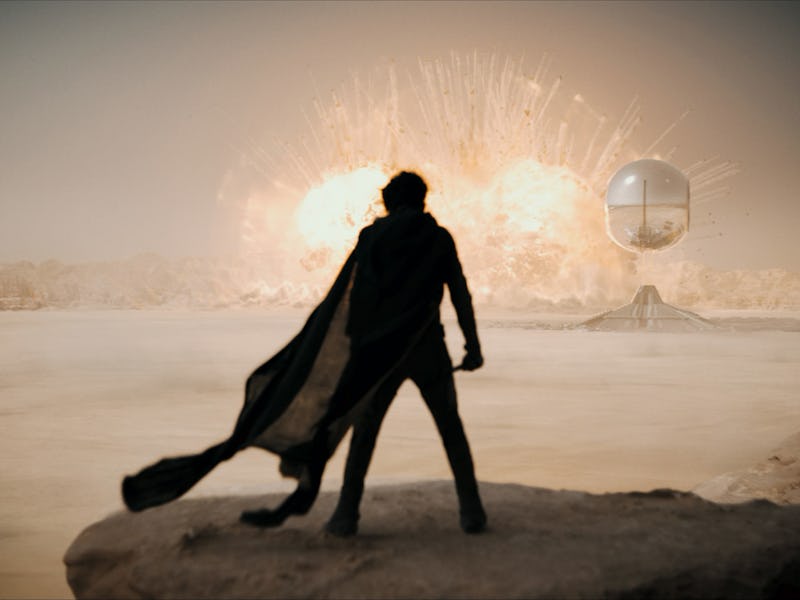Public Service Announcement: It’s Ok to Watch Dune Part 2 On Your Phone
From IMAX to Max.

Hot take: It doesn’t actually matter where you watch Denis Villeneuve’s Dune saga. Sure, IMAX will always be the ideal format — it’s the only place where the sheer scale of Villeneuve’s world can truly be felt. Villeneuve himself has been pretty outspoken about catching his films on the largest screen humanly possible, and he’s not the only filmmaker with a preferred viewing format.
But the merits of Dune and its sequel, Dune: Part Two, aren’t beholden to a big-screen experience. You can, in fact, appreciate Villeneuve’s sci-fi duology from the comfort of your couch, or even (controversial as it sounds) on a smart phone. A good movie will hold your attention no matter how you find it — especially Villeneuve’s movies, which specialize in sheer immersion and propulsive storytelling.
Dune: Part Two might just be the director’s best yet, as the threads set up in 2021’s Dune finally pay off. The world of this saga also feels bigger and more realized than ever, and there’s never a moment that feels out-of-place of self-indulgent. It’s great that Villeneuve and Warner Bros. positioned Part Two as a cinematic event, but as its theatrical window finally comes to a close and the film makes its streaming debut on Max, the Dune sequel is just as engrossing on the small screen.
Part Two picks up right where Dune’s anti-climatic cliffhanger left off and it absolutely hits the ground running. Following the blindsiding destruction of House Atreides, heir apparent Paul (Timothée Chalamet) and his mother, the Lady Jessica (Rebecca Ferguson), appeal to the Fremen (the indigenous peoples of the planet Arrakis). Fast forward a few weeks and the sole survivors of House Atreides are kinda-sorta part of the crew. But it’s not enough for Jessica, a member of the mystical Bene Gesserit convinced that her son could be the long-awaited messiah.
As the Fremen wage war against the forces occupying Arrakis, Jessica works her magic and climbs to a new position of power. Paul, meanwhile, is primarily concerned with getting revenge against House Harkonnen, the bald-headed clan that conspired to destroy his family... notably with the assistance of the Imperium. The Emperor himself finally makes an appearance in Part Two (played a bit too casually by Christopher Walken), along with his daughter Princess Irulan (Florence Pugh). The princess is just one of the Bene Gesserit caught in a political web, while other members of House Harkonnen pull the curtain back on another visually-stunning planet.
Dune: Part Two is a visually-stunning masterpiece, but it’s more than sheer spectacle.
There are a lot of moving parts driving the action in Part Two, and that in turn allows the scope of this universe to get even bigger. It’s a massively rewarding film: even if the story is far from over (and may not continue for a few years), Part Two makes good on so much of the story set up in its predecessor. It’s also one of a handful of recent blockbusters that genuinely challenges its audience. Paul’s journey exists to subvert the orientalist tropes that pervade many a sci-fi epic, and deconstruct the very idea of the messiah figures embarking on these heroic journeys.
Paul is far from a hero by the time the credits role on Part Two, but Villeneuve makes the wise choice to position the warrior Chani (Zendaya) as the true soul of the trilogy. It’s Chani that carries the bulk of Part Two’s emotional stakes, and one of the many characters that make this story endlessly rewatchable. Again, the spectacle here will always be breathtaking, but the emotional and idealogical dynamics at play are equally potent. That’s why Dune will never fail to strike a chord, no matter where (or how) you watch: it’s much more than sheer spectacle.